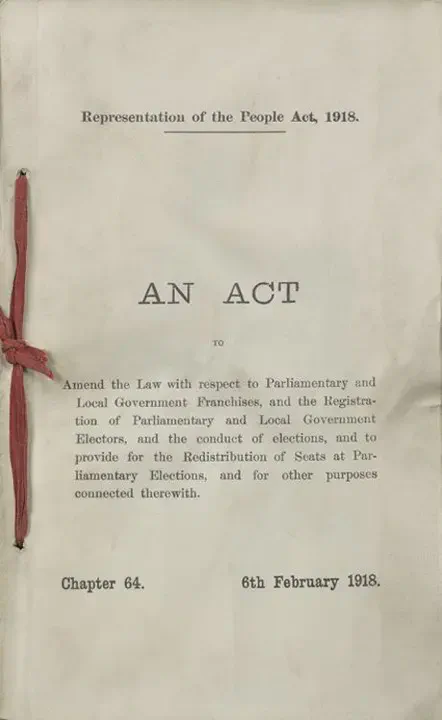- /
- Celtic calendar /
- 2nd /
- February 06 /
- February 06, 1918

The Representation of the People Act 1918 received Royal Assent on February 6, 1918, marking a significant milestone in the history of women’s suffrage in the United Kingdom. This act extended voting rights to certain women for the first time. Specifically, it granted the right to vote to women over the age of 30 who met certain property qualifications.
Key provisions of the Representation of the People Act 1918 included:
Votes for Women Over 30
The most noteworthy aspect of this act was that it allowed women over the age of 30 to vote in parliamentary elections. This was a limited extension of suffrage, but it was a substantial step forward.
Property Qualifications
To be eligible to vote, women had to meet certain property qualifications. These qualifications were similar to those imposed on male voters. Women were required to either be a registered occupier of property with an annual rent of £5 or be the wife of a man who met this property requirement.
Extension of Suffrage to More Men
In addition to granting some women the right to vote, the act also extended suffrage to more men. It abolished various property qualifications for male voters and enfranchised many male soldiers who had served in World War I.
Redistribution of Parliamentary Seats
The act also redistributed parliamentary seats to better reflect population changes. Some constituencies were abolished, and new ones were created.
The Representation of the People Act 1918 was a significant step toward women’s suffrage in the UK. However, it should be noted that full suffrage for women on an equal basis with men was not achieved until the Representation of the People (Equal Franchise) Act 1928, which granted voting rights to all women over the age of 21 without property qualifications.